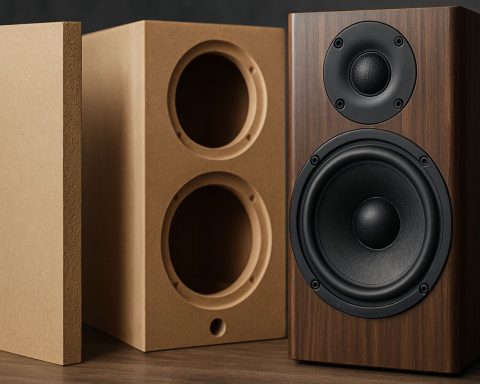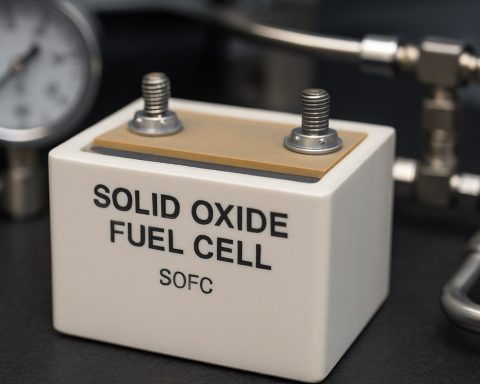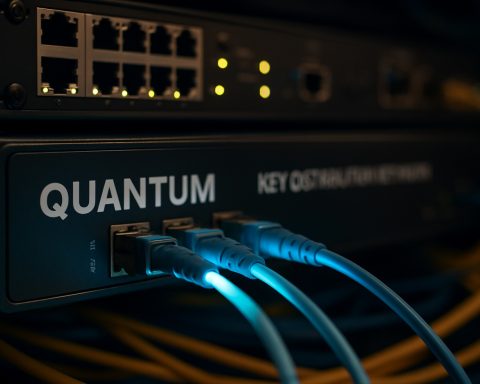Monolithic Microwave Integrated Circuits (MMIC) Design Market Report 2025: In-Depth Analysis of Growth Drivers, Technology Innovations, and Global Opportunities. Explore Key Trends, Forecasts, and Strategic Insights Shaping the Industry.
- Executive Summary & Market Overview
- Key Technology Trends in MMIC Design
- Competitive Landscape and Leading Players
- Market Growth Forecasts (2025–2030): CAGR, Revenue, and Volume Analysis
- Regional Market Analysis: North America, Europe, Asia-Pacific, and Rest of World
- Future Outlook: Emerging Applications and Investment Hotspots
- Challenges, Risks, and Strategic Opportunities in MMIC Design
- Sources & References
Executive Summary & Market Overview
Monolithic Microwave Integrated Circuits (MMICs) are compact, high-frequency integrated circuits that operate typically in the microwave frequency range (300 MHz to 300 GHz). They are fabricated using semiconductor technologies such as Gallium Arsenide (GaAs), Gallium Nitride (GaN), and Silicon Germanium (SiGe), enabling the integration of active and passive components on a single chip. MMICs are foundational to modern wireless communication, radar, satellite, and defense systems due to their high performance, miniaturization, and reliability.
The global MMIC design market is poised for robust growth in 2025, driven by escalating demand for high-frequency, high-bandwidth applications. The proliferation of 5G infrastructure, satellite communications, and advanced radar systems is accelerating the adoption of MMICs. According to MarketsandMarkets, the MMIC market is projected to reach USD 13.4 billion by 2025, growing at a CAGR of 10.2% from 2020 to 2025. This growth is underpinned by the increasing integration of MMICs in smartphones, automotive radar, and aerospace applications.
Key industry players such as Qorvo, Skyworks Solutions, Northrop Grumman, and Analog Devices are investing heavily in R&D to enhance MMIC performance, power efficiency, and integration capabilities. The shift towards GaN-based MMICs is particularly notable, as GaN offers superior power density and thermal performance compared to traditional GaAs technology, making it ideal for high-power and high-frequency applications.
Regionally, North America and Asia-Pacific dominate the MMIC design landscape. North America benefits from strong defense and aerospace sectors, while Asia-Pacific, led by China, South Korea, and Japan, is experiencing rapid growth due to expanding telecommunications infrastructure and consumer electronics manufacturing. The European market is also witnessing steady growth, supported by investments in automotive radar and satellite communications.
In summary, the MMIC design market in 2025 is characterized by technological innovation, expanding end-use applications, and intensifying competition among leading semiconductor companies. The ongoing evolution of wireless standards, coupled with advancements in semiconductor materials and design methodologies, will continue to shape the market’s trajectory in the coming years.
Key Technology Trends in MMIC Design
Monolithic Microwave Integrated Circuits (MMIC) design is undergoing rapid transformation, driven by the demands of next-generation wireless communications, radar systems, and satellite technologies. As we approach 2025, several key technology trends are shaping the MMIC landscape, focusing on performance, integration, and manufacturability.
- Advanced Semiconductor Materials: The adoption of compound semiconductors such as Gallium Nitride (GaN) and Indium Phosphide (InP) is accelerating. GaN, in particular, is favored for its high power density, efficiency, and thermal stability, making it ideal for 5G base stations, phased array radars, and satellite communications. According to Qorvo, GaN MMICs are now central to high-frequency, high-power applications, with ongoing research pushing frequency limits beyond 100 GHz.
- Integration and Miniaturization: There is a clear trend toward higher levels of integration, with MMICs incorporating multiple functions—such as amplifiers, mixers, and switches—on a single chip. This reduces size, weight, and power consumption (SWaP), which is critical for aerospace and defense applications. Analog Devices highlights the growing demand for highly integrated MMICs in phased array antennas and compact communication modules.
- Design Automation and AI: The complexity of MMIC design is being addressed through advanced Electronic Design Automation (EDA) tools and artificial intelligence. These tools enable rapid prototyping, optimization, and verification, reducing time-to-market. Cadence Design Systems and Synopsys are investing in AI-driven design platforms that automate layout and performance tuning for high-frequency circuits.
- Millimeter-Wave and Terahertz Expansion: The push toward millimeter-wave (mmWave) and even terahertz frequencies is intensifying, driven by 6G research and advanced imaging systems. MMICs are being designed to operate efficiently at frequencies above 30 GHz, with some prototypes reaching into the 300 GHz range. NXP Semiconductors and Infineon Technologies are at the forefront of mmWave MMIC development for automotive radar and high-speed wireless backhaul.
- Reliability and Manufacturability: As MMICs are deployed in mission-critical systems, there is a heightened focus on reliability, yield, and cost-effective manufacturing. Innovations in wafer-level packaging and testing are improving device robustness and scalability, as reported by Teledyne Defense Electronics.
These trends collectively point to a future where MMICs are more powerful, compact, and versatile, enabling breakthroughs in wireless connectivity, sensing, and defense technologies by 2025 and beyond.
Competitive Landscape and Leading Players
The competitive landscape of the Monolithic Microwave Integrated Circuits (MMIC) design market in 2025 is characterized by a blend of established semiconductor giants and specialized RF/microwave technology firms. The sector is driven by escalating demand for high-frequency, high-performance components in 5G infrastructure, aerospace and defense, satellite communications, and automotive radar systems. As a result, innovation in MMIC design—particularly in GaN, GaAs, and SiGe technologies—remains a key differentiator among leading players.
Leading Players
- Qorvo, Inc. maintains a dominant position, leveraging its extensive portfolio of GaN and GaAs MMICs for wireless infrastructure, defense, and IoT applications. The company’s focus on high-efficiency power amplifiers and low-noise amplifiers has solidified its role as a preferred supplier for 5G and satellite OEMs.
- Skyworks Solutions, Inc. is another major player, known for its integrated MMIC solutions tailored to mobile, automotive, and IoT markets. Skyworks’ investments in advanced packaging and miniaturization have enabled it to capture significant share in the smartphone and connected device segments.
- Analog Devices, Inc. (ADI) continues to expand its MMIC design capabilities, particularly after its acquisition of Hittite Microwave. ADI’s strength lies in high-performance RF and microwave ICs for instrumentation, aerospace, and communications, with a focus on wideband and high-linearity solutions.
- Northrop Grumman Corporation and Raytheon Technologies are prominent in the defense sector, developing custom MMICs for radar, electronic warfare, and satellite payloads. Their vertical integration and proprietary process technologies provide a competitive edge in mission-critical applications.
- Mitsubishi Electric Corporation and NXP Semiconductors are notable for their contributions to automotive radar and industrial wireless, with a focus on robust, high-reliability MMICs.
The market is also witnessing the emergence of niche players such as MACOM Technology Solutions and Custom MMIC (now part of Qorvo), which specialize in custom and high-frequency MMICs for aerospace, test, and measurement applications. Strategic partnerships, IP development, and investments in advanced semiconductor materials are expected to intensify competition and drive further innovation in MMIC design through 2025.
Market Growth Forecasts (2025–2030): CAGR, Revenue, and Volume Analysis
The Monolithic Microwave Integrated Circuits (MMIC) design market is poised for robust growth between 2025 and 2030, driven by escalating demand in telecommunications, defense, automotive radar, and satellite communications. According to projections by MarketsandMarkets, the global MMIC market is expected to register a compound annual growth rate (CAGR) of approximately 9% during this period. This growth trajectory is underpinned by the rapid expansion of 5G infrastructure, increased adoption of advanced driver-assistance systems (ADAS), and the proliferation of IoT devices requiring high-frequency, low-power solutions.
Revenue forecasts indicate that the MMIC design segment will contribute significantly to the overall market, with global revenues projected to surpass USD 15 billion by 2030, up from an estimated USD 9.5 billion in 2025. This surge is attributed to the integration of MMICs in next-generation wireless communication systems and the ongoing miniaturization of electronic components, which necessitate sophisticated design methodologies and simulation tools. The Asia-Pacific region, led by China, South Korea, and Japan, is anticipated to dominate revenue generation, owing to substantial investments in 5G networks and a strong presence of semiconductor manufacturing hubs (Global Market Insights).
In terms of volume, the number of MMIC units shipped is expected to grow in tandem with revenue, with annual shipments projected to reach over 2.5 billion units by 2030. The telecommunications sector will remain the largest consumer, followed by automotive and aerospace applications. The increasing complexity of MMIC design, particularly for millimeter-wave frequencies, is driving demand for advanced electronic design automation (EDA) tools and specialized design services, further fueling market expansion (Fortune Business Insights).
- CAGR (2025–2030): ~9%
- Projected Revenue (2030): >USD 15 billion
- Projected Volume (2030): >2.5 billion units
- Key Growth Drivers: 5G rollout, automotive radar, IoT expansion, satellite communications
- Leading Regions: Asia-Pacific, North America, Europe
Regional Market Analysis: North America, Europe, Asia-Pacific, and Rest of World
The global Monolithic Microwave Integrated Circuits (MMIC) design market exhibits distinct regional dynamics, shaped by technological advancements, end-user demand, and government initiatives. In 2025, North America remains the leading region, driven by robust investments in defense, aerospace, and 5G infrastructure. The United States, in particular, benefits from the presence of major MMIC design and fabrication companies, as well as significant R&D funding from agencies such as the Defense Advanced Research Projects Agency (DARPA). The region’s focus on next-generation radar, satellite communications, and electronic warfare systems continues to fuel demand for advanced MMIC solutions.
Europe follows as a significant market, with growth propelled by the expansion of 5G networks, automotive radar applications, and space exploration initiatives. Countries like Germany, France, and the United Kingdom are investing in indigenous semiconductor capabilities and collaborating on pan-European projects to reduce reliance on external suppliers. The European Union’s Chips Act is expected to further stimulate MMIC design innovation and manufacturing capacity, supporting both commercial and defense sectors.
Asia-Pacific is the fastest-growing region, with China, Japan, South Korea, and Taiwan at the forefront. The region’s rapid adoption of 5G, IoT, and advanced automotive technologies is driving substantial demand for MMICs. China’s government-backed initiatives, such as the National Development and Reform Commission (NDRC)’s focus on semiconductor self-sufficiency, are fostering local MMIC design ecosystems. Meanwhile, Japan and South Korea leverage their established electronics industries to innovate in high-frequency and low-noise MMICs for consumer and industrial applications. Taiwan’s foundry model, led by companies like TSMC, provides critical manufacturing support for global MMIC designers.
- North America: Dominated by defense and aerospace, with strong R&D and government support.
- Europe: Growth in 5G, automotive, and space; policy-driven investment in semiconductor sovereignty.
- Asia-Pacific: Fastest growth, led by 5G, IoT, and automotive; significant government and industry investment.
- Rest of World: Includes emerging markets in the Middle East and Latin America, where MMIC adoption is nascent but expected to rise as telecom and defense infrastructure modernizes.
Overall, regional market trends in 2025 reflect a combination of technological leadership, strategic policy initiatives, and evolving end-user requirements, positioning MMIC design as a critical enabler of next-generation wireless and defense systems worldwide.
Future Outlook: Emerging Applications and Investment Hotspots
The future outlook for Monolithic Microwave Integrated Circuits (MMIC) design in 2025 is shaped by rapid advancements in wireless communication, defense technologies, and the proliferation of high-frequency applications. As 5G and the anticipated rollout of 6G networks drive demand for higher bandwidth and lower latency, MMICs are increasingly critical for enabling compact, high-performance radio frequency (RF) front ends in both infrastructure and user devices. The integration of gallium nitride (GaN) and indium phosphide (InP) materials is expected to further enhance MMIC performance, particularly in terms of power efficiency and frequency range, making them indispensable for next-generation base stations and satellite communications.
Emerging applications are expanding beyond traditional telecom and defense sectors. Automotive radar, especially for advanced driver-assistance systems (ADAS) and autonomous vehicles, is a rapidly growing market for MMICs, with demand for high-frequency, low-noise amplifiers and phase shifters. The global automotive radar market is projected to reach $10.5 billion by 2025, with MMICs playing a pivotal role in this growth (MarketsandMarkets). Additionally, the rise of the Internet of Things (IoT) and industrial automation is fueling the need for compact, energy-efficient MMICs in sensor networks and wireless connectivity modules.
Investment hotspots are emerging in regions with strong semiconductor ecosystems and government support for advanced manufacturing. Asia-Pacific, particularly China, South Korea, and Taiwan, continues to attract significant investment in MMIC fabrication and design, driven by robust demand for consumer electronics and telecom infrastructure (SEMI). The United States and Europe are also focusing on strategic investments in compound semiconductor foundries and design houses, aiming to secure supply chains for critical defense and aerospace applications (Semiconductor Industry Association).
- Emerging applications: 5G/6G, automotive radar, satellite communications, IoT, and industrial automation.
- Material innovation: GaN and InP-based MMICs for higher power and frequency performance.
- Regional investment: Asia-Pacific leads in manufacturing, while the US and Europe prioritize strategic and defense-related MMIC development.
In summary, 2025 will see MMIC design at the forefront of enabling next-generation wireless, automotive, and industrial technologies, with investment flowing into both established and emerging markets to support innovation and supply chain resilience.
Challenges, Risks, and Strategic Opportunities in MMIC Design
The design of Monolithic Microwave Integrated Circuits (MMICs) in 2025 is characterized by a complex interplay of technical challenges, market risks, and emerging strategic opportunities. As MMICs are increasingly integral to applications in 5G/6G communications, radar, satellite, and defense systems, the pressure to innovate while managing cost and performance trade-offs is intensifying.
Key Challenges and Risks:
- Process Technology Limitations: The relentless push toward higher frequencies (mmWave and beyond) exposes the limitations of existing semiconductor processes such as GaAs, GaN, and SiGe. Device scaling for improved performance often leads to increased process variability and yield challenges, impacting both cost and reliability (Texas Instruments).
- Thermal Management: As MMICs handle higher power densities, thermal dissipation becomes a critical bottleneck. Inadequate heat management can degrade performance and reduce device lifespan, necessitating advanced packaging and materials solutions (Qorvo).
- Design Complexity and Integration: The demand for multi-functionality in compact footprints increases design complexity. Integrating multiple RF, analog, and digital functions on a single chip raises issues related to signal integrity, electromagnetic interference, and cross-talk (Analog Devices).
- Supply Chain and Geopolitical Risks: The MMIC supply chain is sensitive to disruptions, particularly for specialized substrates and foundry services. Geopolitical tensions and export controls can further exacerbate these risks, impacting lead times and costs (Semiconductor Industry Association).
Strategic Opportunities:
- Advanced Materials and Processes: The adoption of new materials such as GaN-on-SiC and innovations in 3D heterogeneous integration offer pathways to higher performance and efficiency, opening new markets in automotive radar and satellite communications (MarketsandMarkets).
- AI-Driven Design Automation: Leveraging artificial intelligence and machine learning for MMIC design and verification can accelerate time-to-market and optimize performance, addressing the growing complexity of next-generation circuits (Synopsys).
- Vertical Integration and Ecosystem Partnerships: Strategic alliances between foundries, EDA tool providers, and system integrators can mitigate supply chain risks and foster innovation, particularly in defense and aerospace sectors (Northrop Grumman).
Sources & References
- MarketsandMarkets
- Skyworks Solutions
- Northrop Grumman
- Analog Devices
- Synopsys
- NXP Semiconductors
- Infineon Technologies
- Teledyne Defense Electronics
- Raytheon Technologies
- Mitsubishi Electric Corporation
- Global Market Insights
- Fortune Business Insights
- Defense Advanced Research Projects Agency (DARPA)
- Chips Act
- National Development and Reform Commission (NDRC)
- Texas Instruments
- Semiconductor Industry Association











